When the surface of a road is so damaged that it may compromise driving safety, the road requires rehabilitation. Road milling machines, also called cold milling machines or cold planers, are essential equipment for road rehabilitation . They remove damaged top layers ( asphalt or concrete ), improve surface smoothness, and prepare pavements for resurfacing. The removed materials, especially asphalt, can be recycled for future road projects. Then, what is a road milling machine? Read on to discover every detail about this popular heavy machine.
What Is a Road Milling Machine?
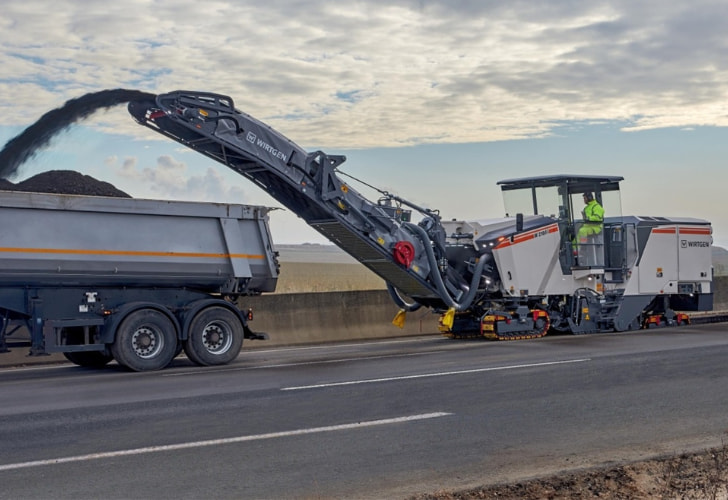
(Image Source: wirtgen-group.com)
A road milling machine is a piece of heavy equipment used to remove the upper layers of asphalt or concrete from road surfaces. Instead of tearing out the entire pavement, the machine grinds off only the worn or damaged layer, creating a smooth and even foundation for new pavement. This process is critical because the quality of the milled surface directly affects how well the new asphalt will perform, from durability to ride comfort. In many cases, the removed material is not wasted. Instead, it can be sorted by type and recycled into fresh asphalt mixes, making the process both cost-efficient and environmentally sustainable.
Main Applications of Road Milling Machines
Cold planers are widely used in road maintenance, repair, and surface preparation. On bridges and railway box girders, they can roughen the concrete surface to improve flatness and ensure proper waterproofing. In asphalt pavements, they are applied to remove bumps, ruts, cracks, and potholes, as well as to clear ice and snow from bridge decks and roadways.
Beyond highways, cold milling machines also play an important role in specialized surface treatment. They can remove coatings, paint, or old traffic markings from the ground, refresh worn or contaminated concrete floors, and restore a clean surface for new layers. At airports, road milling machines help remove runway markings or tire skid marks, creating a rough texture with high friction for safe aircraft operations. They are also used to level uneven surfaces on asphalt or concrete roads, bridge decks, or epoxy resin floors where height tolerances are exceeded.
Components of a Road Milling Machine
Although road milling machines come in different sizes and configurations, their working principles are quite similar. Each machine is built around several major components that work together to finish the milling job.
At the core is the milling drum, a large rotating cylinder fitted with numerous tool holders and road milling teeth . As the drum spins, these teeth grind into the asphalt or concrete surface, removing material layer by layer. The arrangement and quality of the cutting tools directly determine the efficiency, precision, and smoothness of the milling process.
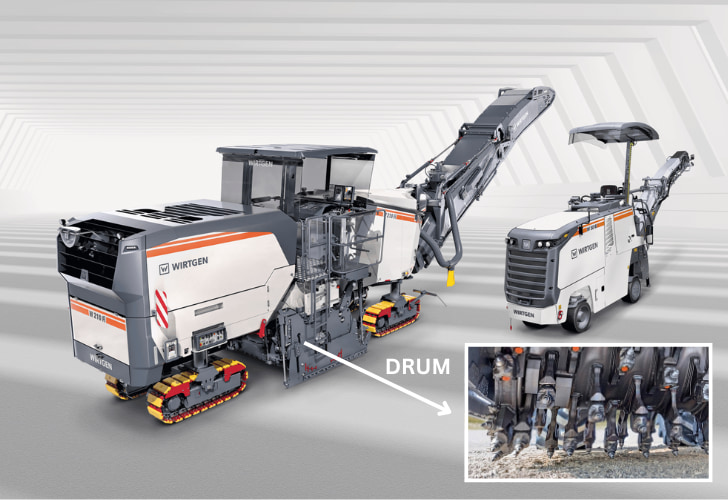
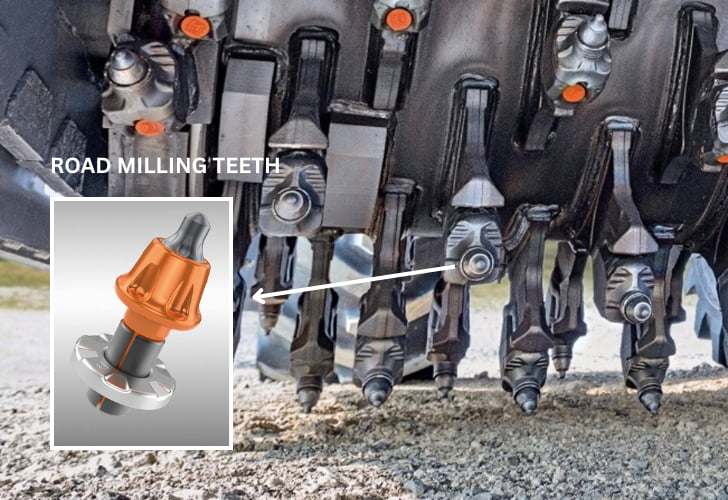
(Image Source: wirtgen-group.com)
Supporting the drum is a hydraulic system, which powers not only the drum’s rotation but also the machine’s movement and auxiliary functions. Many models feature independent hydraulic circuits to ensure reliable performance without interference between systems. Advanced cold planers are also equipped with automatic leveling systems that help maintain a consistent milling depth, even on uneven surfaces, and some models include a slope adjustment mechanism for added flexibility.
Another critical component is the conveyor system. It collects the milled material from the drum and transfers it, typically through a two-stage conveyor, into waiting trucks. The conveyor’s height and swing range can be adjusted, making it easier to manage material flow and keep the job site efficient.
Finally, the control panels form the interface between the machine and the operator. Modern road milling machines are equipped with digital or automated control panels that allow operators to fine-tune parameters such as cutting depth, working speed, and conveyor positioning.
Types of Road Milling Machines
Road milling machines are designed in different sizes to match the scale and requirements of a project. From small units that handle patchwork repairs to powerful machines capable of removing entire road layers, each size category serves a distinct purpose.
1. Small Cold Milling Machines
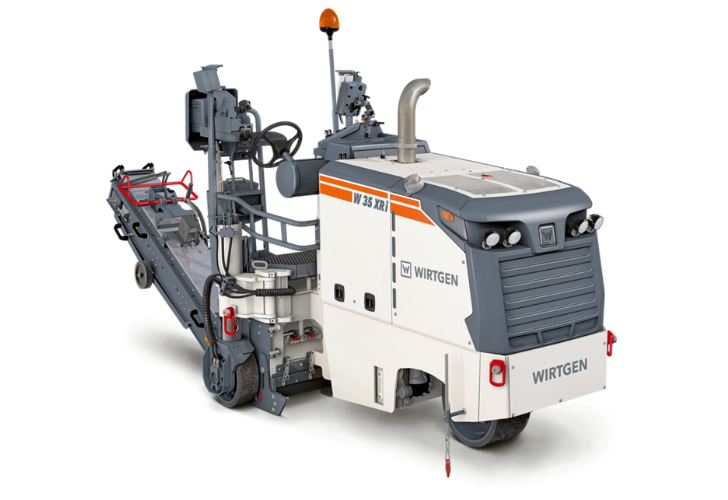
(Image Source: wirtgen-group.com)
Small milling machines are valued for their versatility and maneuverability. With compact dimensions and a minimal turning radius, they are ideal for working in confined areas such as city streets, intersections, or around road fixtures and tight curves. Because of their size, they are often used for localized repairs, surface texturing, or floor rehabilitation in industrial spaces. They can even be transported in a pickup truck, making them highly practical for small-scale maintenance.
2. Compact Cold Milling Machines
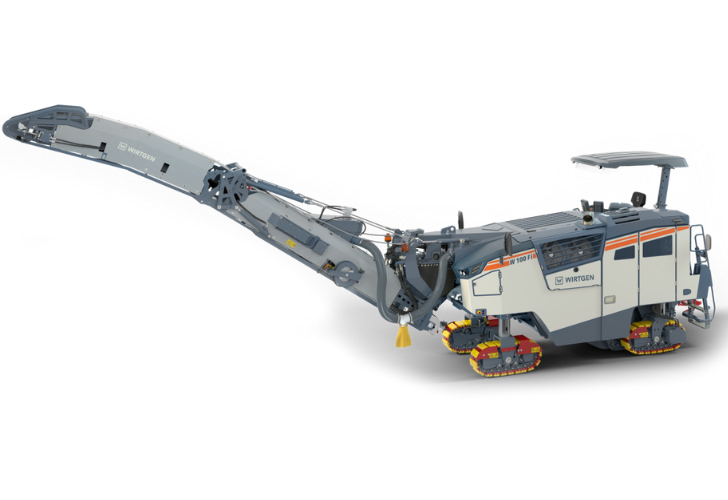
(Image Source: wirtgen-group.com)
Compact milling machines combine the flexibility of small machines with the performance of larger ones. Operated as front loaders, they are well-suited for both urban projects with limited space and for medium-scale road rehabilitation. They can handle spot repairs, layer-by-layer pavement removal, or smoothing irregular surfaces. This flexibility makes them a popular choice for municipalities and contractors who need a balance between maneuverability and productivity.
3. Large Cold Milling Machines
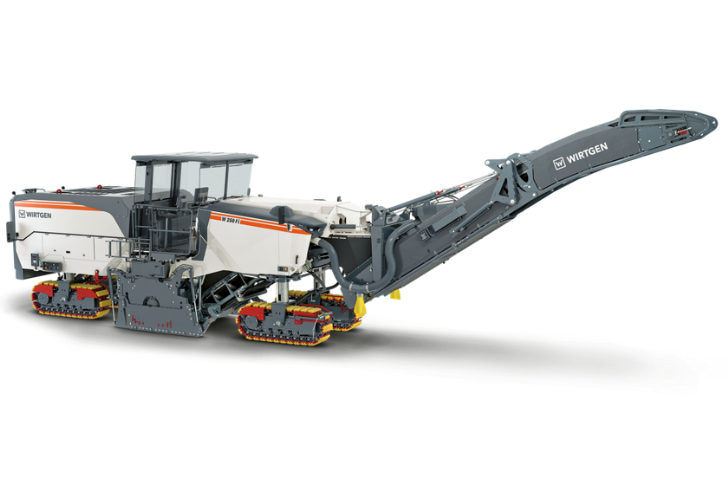
(Image Source: wirtgen-group.com)
Built for high-performance milling over extensive areas, large milling machines can remove full pavement layers at depths of up to 14 inches. They are indispensable for highway rehabilitation and large-scale resurfacing projects. Their powerful conveyor systems continuously load trucks in the direction of traffic, keeping the workflow smooth and minimizing disruptions. With the ability to remove the entire layer at once, the large cold planer delivers maximum efficiency and speed, reducing overall construction time and traffic impact.
How Deep Can a Road Milling Machine Mill?
According to Wirtgen ’s specifications for their cold milling machines, working widths and cutting depths vary significantly by machine model.
Small cold milling machines:
- Working width: 14 in to 3 ft 11 in (35–120 cm)
- Maximum cutting depth: 4–12 in (10–30 cm)
Compact cold milling machines:
- Working width: 3 ft 3 in to 4 ft 11 in (100–150 cm)
- Maximum cutting depth: 13 in (33 cm)
Large cold milling machines:
- Working width: 7 ft 3 in (220 cm)
- Maximum cutting depth: 12–14 in (30–35 cm)
Things to Consider When Selecting a Road Milling Machine
Choosing the right road milling machine is about more than just size or horsepower; it’s about matching the machine to both your current projects and the jobs you expect to take on in the future. Key factors include ease of operation, safety, long-term ownership costs, and productivity.
Buyers, especially contractors, should pay close attention to drum configuration and cutting width, as these determine how well the machine performs in tight spaces or on large-scale projects. Machine power must be balanced with available support equipment; too little horsepower limits performance, while too much without proper support wastes potential.
For smaller crews, operator visibility and simple controls become critical. Advanced grade and slope control technology can also boost efficiency and job quality. In many cases, working with trusted manufacturers or even renting first can help ensure you’re investing in a machine that truly fits your needs.
Reliable Brands on the Market
When it comes to trusted brands, names like Wirtgen , Caterpillar , Bomag , and Roadtec are well-known in the industry for their reliability and performance.
*All of the above images are not intended for commercial use.
